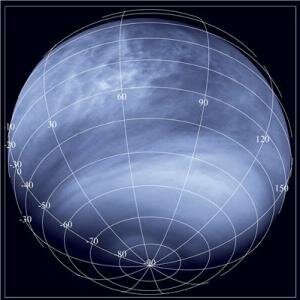Was Venus Once a Habitable Planet?
The European Space Agency's Venus Express is helping planetary scientists investigate whether Venus once had oceans.
If it did, it may even have begun its existence as a habitable planet similar to Earth.
These days, Earth and Venus seem completely different. Earth is a lush, clement world teeming with life, whilst Venus is hellish, its surface roasting at temperatures higher than those of a kitchen oven.
But underneath it all the two planets share a number of striking similarities. They are nearly identical in size and now, thanks to ESA's Venus Express orbiter, planetary scientists are seeing other similarities too.
"The basic composition of Venus and Earth is very similar," says Håkan Svedhem, ESA Venus Express Project Scientist. Just how similar planetary scientists from around the world will be discussing in Aussois, France, where they are gathering this week for a conference.
One difference stands out: Venus has very little water. Were the contents of Earth's oceans to be spread evenly across the world, they would create a layer 3 km deep. If you were to condense the amount of water vapour in Venus' atmosphere onto its surface, it would create a global puddle just 3 cm deep.
Yet there is another similarity here. Billions of years ago, Venus probably had much more water. Venus Express has certainly confirmed that the planet has lost a large quantity of water into space.

"Venus has lost large quantities of water. Venus Monitoring Camera image taken in the ultraviolet (0.365 micrometres), from a distance of about 30 000 km. It shows numerous high-contrast features, caused by an unknown chemical in the clouds that absorbs ultraviolet light, creating the bright and dark zones. With data from Venus Express, scientists have learnt that the equatorial areas on Venus that appear dark in ultraviolet light are regions of relatively high temperature, where intense convection brings up dark material from below. In contrast, the bright regions at mid-latitudes are areas where the temperature in the atmosphere decreases with depth. The temperature reaches a minimum at the cloud tops suppressing vertical mixing. This annulus of cold air, nicknamed the ‘cold collar’, appears as a bright band in the ultraviolet images. (Credit: ESA/MPS/DLR/IDA)"
Source: ESA
|